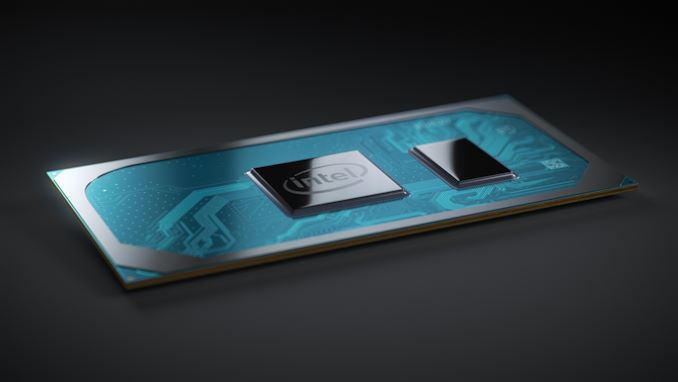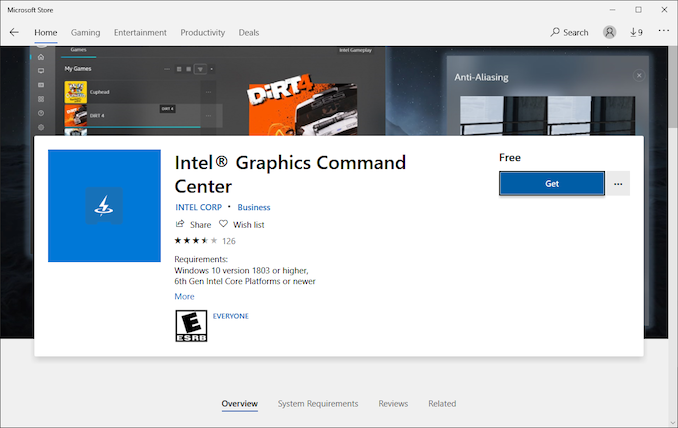GPUs Unleashed: Intel Releases First Unlocked GPU Driver For OEM Systems
by Ryan Smith on April 28, 2020 10:00 AM EST- Posted in
- GPUs
- Intel
- Drivers
- Windows 10

While Intel’s integrated GPUs have made immense strides over the past decade, there’s been one particular legacy they’ve been unable to break free from: OEM driver locking. Due to the large degree of customization and optimization that OEMs sometimes do to their systems, some OEMs have insisted on having video drivers “locked” to their platforms, so that only video drivers that they’ve customized and distributed can be installed.
This structure has always offered at least a modicum of utility, ensuring that newer drivers don’t break things or otherwise interfere with those system customizations. But as desktops and laptops live longer than ever, OEM have demonstrated a shorter attention span than Intel when it comes to driver updates. As a result, unfortunate system owners have found themselves stuck in a bind with older (and even some newer) systems, where there are newer drivers with important bug fixes for games and applications, but those drivers can’t be installed because they haven’t been customized and approved by the OEM.
Thankfully, it looks like the days of Intel OEM driver locking are finally behind us. Yesterday evening Intel released a new version of its Windows 10 GPU driver, version 26.20.100.8141, that’s fully unlocked, allowing it to be installed on virtually all OEM systems for the first time. And while there are a handful of catches, ultimately this driver should work with most OEM systems that are running a current, supported version of Windows 10 on top of an Intel Gen9 or later iGPU.
Going by Intel’s release notes, the key development here, besides seemingly throwing caution into the wind and telling OEMs to step back, is the now widespread use of Microsoft’s newer Declarative Componentized Hardware (DCH) video driver format. First introduced along Windows 10 1803 almost two years ago, DCH is a newer, modularized driver format that among other things, allows for more piecemeal distribution of the components within a driver. For Intel and NVIDIA users, for example, their respective graphics control panels are distributed and installed via the Windows Store when installing a DCH driver.
Critically, OEM-specific customizations are modularized under DCH as well, meaning that those customizations are no longer part of the base driver package, in Microsoft parlance. This means that it’s possible to distribute and update the base driver as a generic package, doing away with the need to make OEM-specific builds that incorporate their customizations. Ultimately, unlocked drivers have been part of Microsoft’s big plan for drivers since Windows 10 1803 shipped, and this week Intel is finally putting that plan further into motion with the release of their first unlocked driver set.
Meanwhile, although Intel is distributing unlocked drivers, they are being cautious about it, at least initially. At the very top of the driver description, before anything else, is the following warning text.
WARNING: Installing this Intel generic graphics driver will overwrite your Computer Manufacturer (OEM) customized driver. OEM drivers are handpicked, customized, and validated to resolve platform-specific issues, enable features and enhancements, and improve system stability. The generic driver’s intention is to temporarily test new features, game enhancements, or check if an issue is resolved. Once testing is complete Intel advises reinstalling the OEM driver until they validate it and release their own version.
For now, at least, Intel is calling these unlocked drivers test drivers. But so long as they work correctly, there’s going to be little need to go back to using pre-baked OEM drivers. Intel moves faster than the OEMs, and typically the company updates its generic drivers for far longer than OEMs update their custom drivers. So it should be a win for all parties: Intel improves the user experience by getting drivers to users sooner, users get bug fixes and updates sooner, and OEMs have to less ongoing maintenance and driver customization work. Which is all the more important for all parties as Intel’s integrated GPUs have continued to improve with recent releases like the Ice Lake Iris Plus (G7) iGPUs, as well as the upcoming Xe-based iGPU that will be in Tiger Lake.
Finally, with all of that said, it should be noted that there is a catch: because this unlocked driver functionality is based around the Windows 10 DCH driver model, it means that a system needs to already have an OEM DCH driver installed – a so-called “OEM DCH to Intel Generic DCH” driver upgrade. So for an older system that is running a current build of Windows 10 but is relying on a standalone-style driver, it will not be possible to install the unlocked Intel driver. In this case a user would first need to install an OEM DCH driver, if one is available. Otherwise, Intel’s new driver package doesn’t do anything for systems running pre-DCH drivers.
You can find the full details on Intel’s new iGPU driver, as well as the associated release notes, over on Intel’s driver download page.
Source: Intel











26 Comments
View All Comments
brucethemoose - Tuesday, April 28, 2020 - link
Good!Deep OEM "customization" has been a plague on laptops (and desktops... and Android...) for decades. Being able to get frigging driver updates won't fix that, but its a huge positive step.
Irata - Tuesday, April 28, 2020 - link
Agree, especially when said OEM don't update their drivers. Had this problem with Samsung laptops several years ago. From this point on I checked if standard drivers could be installed before buying.niva - Tuesday, April 28, 2020 - link
How does this fit in with linux? Kernel updates seem to handle improvements, including to the graphics. Is this really an Intel problem, or more of a Windows problem?Remember, there are no stupid questions!
OutOfTheBox - Tuesday, April 28, 2020 - link
I have an Acer laptop that is a fairly high-end desktop replacement - 17", quad core CPU, 16GB, 256 GB SDD, etc. But, it has a graphics system called "Optimus" that unites a NVidia GPU with an integrated Intel graphics unit. The NVidia output gets piped through the Intel integrated processor to get to the screen.It is seriously undersupported in Linux - mainly because NVidia refused to support the integration between their GPU and the Intel integrated GPU in their Linux drivers. I tried to live with it for years by installing community tweaks that were extremely touchy. Most Linux updates broke the graphics system and had me crawling through configuration files using the command line editors for a couple of days to get it working again.
I finally switched back to Windows full time a bit more than a year ago because the updates just work compared to my experience in Linux.
That said, I'm very hesitant about utilizing these new drivers. I'd like to see that others with Optimus laptops have successfully done so first. Intel and NVidia suck at cooperating with each other.
sandeep_r_89 - Friday, May 1, 2020 - link
It's a Windows problem. On Linux you just have the open source upstream driver that is part of the kernel, libdrm, mesa etc. No special OEM nonsense.brucethemoose - Wednesday, April 29, 2020 - link
Samsung was teerrible. A family Samsung laptop had, amongst other things:-A proprietary Intel driver
-A proprietary brightness/volume/key function driver. There was literally no brightness control without it.
-Pre installed RAMDrive software with a serious memory leak.
-*Two* proprietary updater for all the drivers and bloatware.
So, I learned the same lesson.
cosmotic - Tuesday, April 28, 2020 - link
I don't think I've ever seen an OEM customization I would consider an improvement. 20 services running in the background, trashy UIs in all the control panels, buggy drivers, unreliable software... it's a godsend when microsoft offers a driver that 'just works'.zepi - Tuesday, April 28, 2020 - link
I had an alienware with switchable graphics years before such thing existed natively. But it was indeed hampered by the fact that it was a pain to get new Geforce drivers and I just had to live with the old ones from time to time (Until Alienware threw in the towel and I couldn't upgrade anymore).jeremyshaw - Tuesday, April 28, 2020 - link
Typical of Intel, last to join the civilized world. Nvidia took ownership after 2009 and AMD did so last year as well.Only now, does Intel finally realize letting lazy OEMs restrict driver updates is a bad thing?
surajn007 - Tuesday, April 28, 2020 - link
Does AMD have the same sort of locking